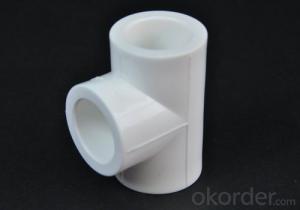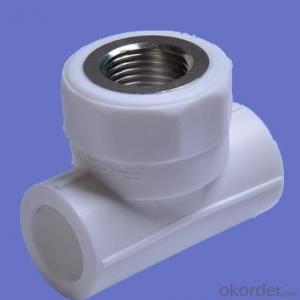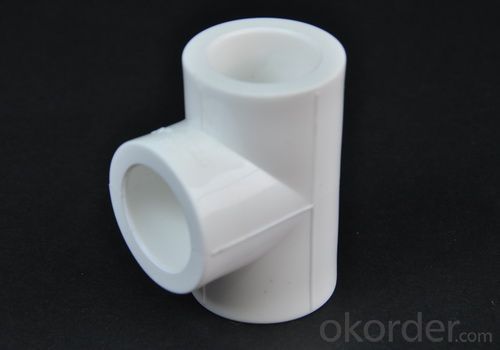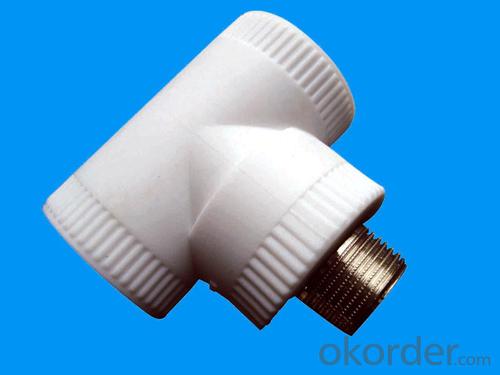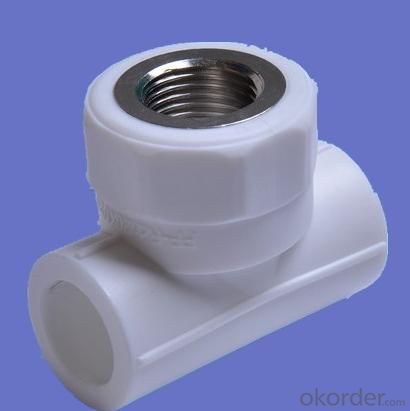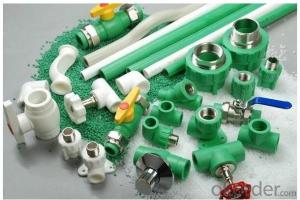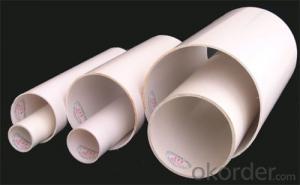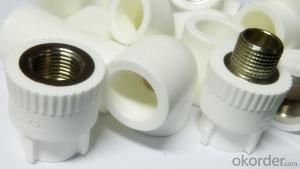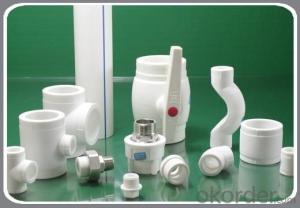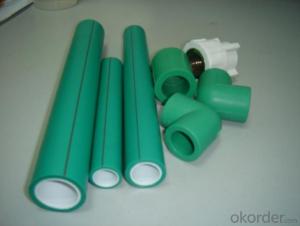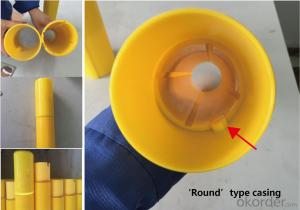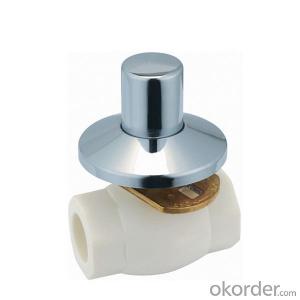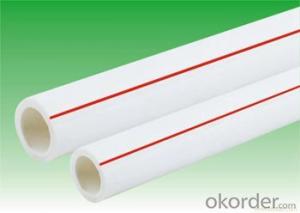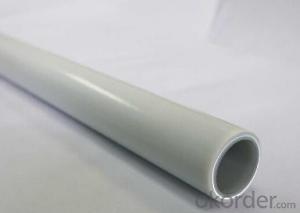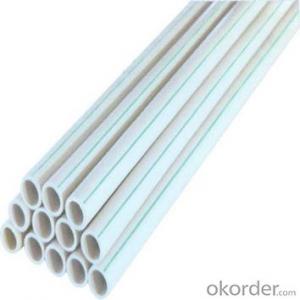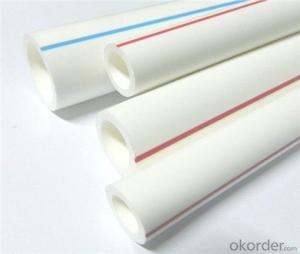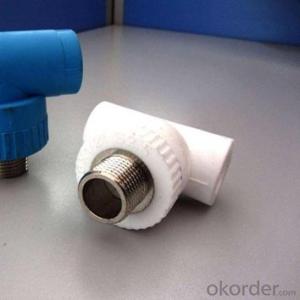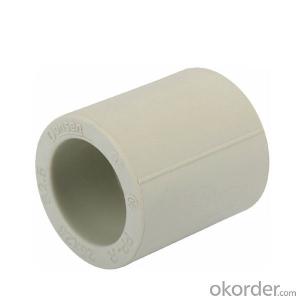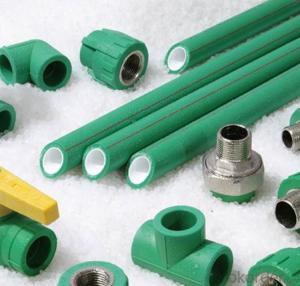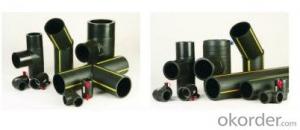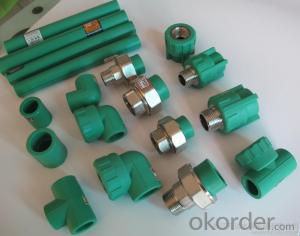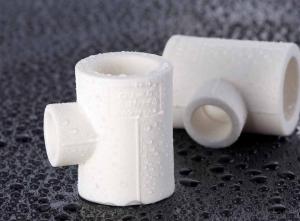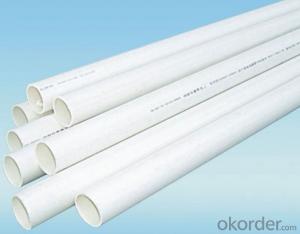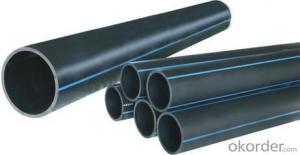Plastic Pipe Clamp Fittings for PPR Tee Fittings of Industrial Application Made in China
- Loading Port:
- Tianjin
- Payment Terms:
- TT OR LC
- Min Order Qty:
- 1000 pc
- Supply Capability:
- 1000000 pc/month
OKorder Service Pledge
OKorder Financial Service
You Might Also Like
Product Overview
PP-R (polypropylene random) tube called type three polypropylene pipe and is also called the PP-R pipe or PPR pipe, with energy saving, environmental protection, high strength, corrosion resistance, with smooth inner wall has the advantages of scale, construction and easy maintenance, long service life, widely used in building water supply and drainage, urban drainage city gas and power cable sheath, and industrial fluid transportation, agricultural irrigation construction, municipal, industrial and agricultural fields. The PP-R pipe is made of random copolymerized polypropylene and is extruded into tubes to be molded into tubes.
Advantages
1)Light weight, convenient to transport and handle
2)High strength
3)less resistance
4)Corrosion resistance
5)Sound insulation
6)Easy to install
7)long lifespan
8)low cost
9)Recyclable: thereby benefiting the environment
10)OEM/ODM welcome standards
11)Reliable installation
Product Description
Product name | Size | Weight | Pack |
Equal tee | (Gram/m) | (m/pack) | |
T16 | 12.5 | 1300 | |
T20 | 19.4 | 800 | |
T25 | 30.5 | 450 | |
T32 | 48.2 | 260 | |
T40 | 90.8 | 150 | |
T50 | 142.5 | 106 | |
T63 | 275.3 | 54 | |
T75 | 515.0 | 30 | |
T90 | 712.0 | 18 | |
T110 | 1082.0 | 12 | |
T125 | 1544.0 | 8 | |
T160 | 2531.0 | 4 |
Product Show
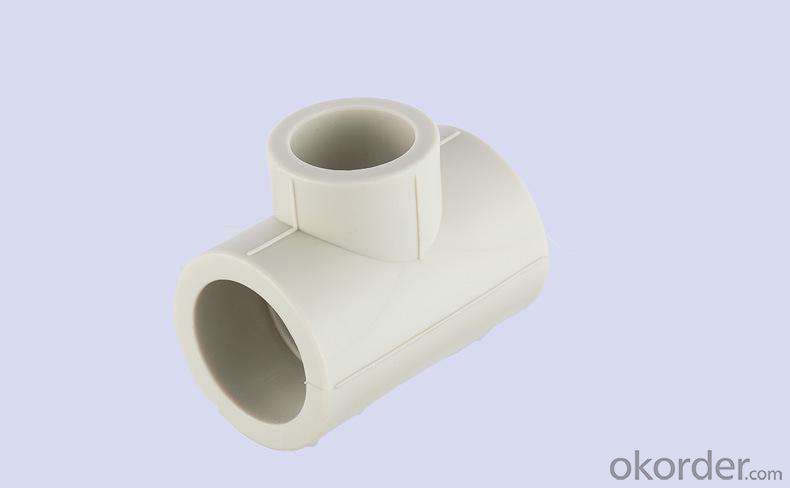

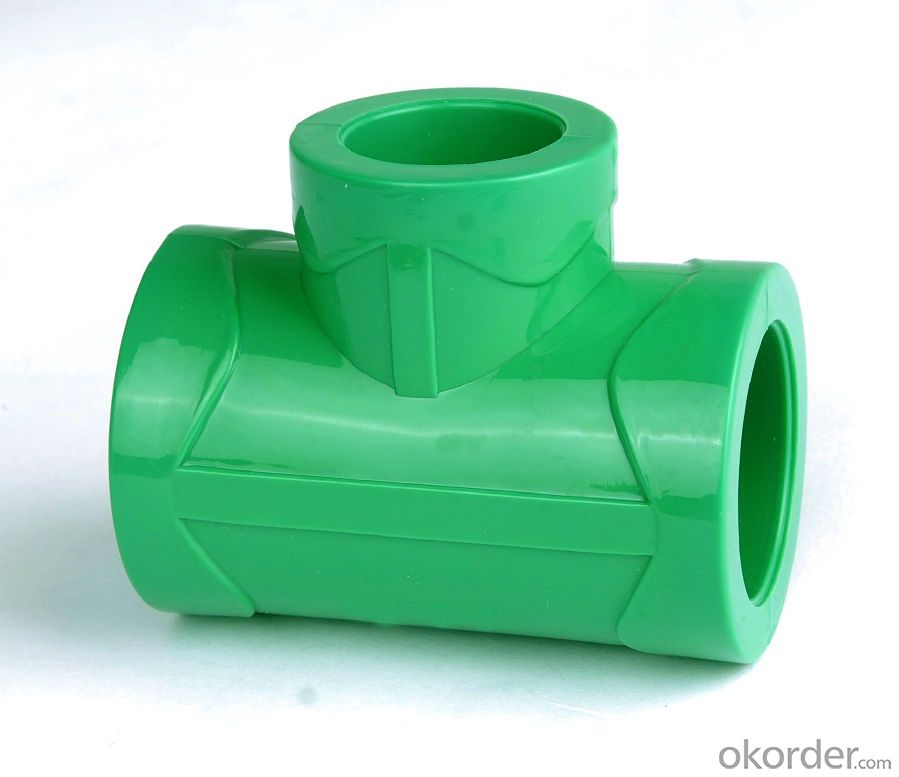
FAQ
1. Can you find a translator for me?
You can tell us which language you speak, we will find the translator for you, and will be together work.
2. If we want to develop some new item, but maybe we just have some ideas, how can you do?
We can make new mold base on your idea, generally, if your quantity is more enough, we can refund the mold cost to you.
3. How Long Is Delivery?
Delivery time will be 30-45 days according to order quantity.
4.What Is Our Normal Payments Terms?
Our normal payment terms: T/T, L/C or western union.
- Q: Can plastic pipe fittings be used in fire sprinkler systems?
- Yes, plastic pipe fittings can be used in fire sprinkler systems, but they must be specifically designed and listed for use in such systems. It is important to ensure that these fittings meet all necessary fire safety standards and regulations to ensure the effectiveness and reliability of the fire sprinkler system.
- Q: How do you connect plastic pipe fittings to PEX pipes?
- To connect plastic pipe fittings to PEX pipes, you can use either a crimp ring or a push-fit connection. The crimp ring method involves sliding a crimp ring onto the PEX pipe, inserting the fitting, and then using a crimping tool to compress the ring onto the pipe and secure the connection. On the other hand, push-fit connections involve simply pushing the PEX pipe into the fitting until it clicks into place, creating a reliable and secure connection. Both methods are commonly used and effective for connecting plastic pipe fittings to PEX pipes.
- Q: Can plastic pipe fittings be used for radiant cooling systems?
- Yes, plastic pipe fittings can be used for radiant cooling systems. Plastic pipe fittings, such as PEX (cross-linked polyethylene) fittings, are commonly used in radiant cooling systems due to their durability, flexibility, and ease of installation. Additionally, plastic fittings are resistant to corrosion and have low thermal conductivity, making them suitable for use in cooling systems where condensation may occur.
- Q: Are plastic pipe fittings suitable for compressed gas applications?
- Yes, plastic pipe fittings can be suitable for compressed gas applications. However, it is important to choose the right type of plastic material that is compatible with the specific gas being used. Additionally, proper installation techniques and pressure ratings must be followed to ensure safety and reliability.
- Q: Are plastic pipe fittings suitable for underground installations?
- Yes, plastic pipe fittings are suitable for underground installations. They are commonly used due to their durability, resistance to corrosion, and ability to withstand underground pressure and environmental conditions. Additionally, plastic pipe fittings are lightweight, making them easier to handle and install in underground applications.
- Q: Are plastic pipe fittings resistant to freezing temperatures?
- Yes, plastic pipe fittings are generally resistant to freezing temperatures. They are designed to withstand cold temperatures without cracking or breaking, making them a suitable option for plumbing systems in cold climates.
- Q: Are plastic pipe fittings resistant to seismic activity?
- Yes, plastic pipe fittings are generally resistant to seismic activity. They have the ability to flex and withstand ground movement during earthquakes, reducing the risk of damage or rupture. This makes plastic pipe fittings a reliable choice for seismic-prone areas.
- Q: Are plastic pipe fittings resistant to hydrocarbons and oils?
- Yes, plastic pipe fittings are generally resistant to hydrocarbons and oils.
- Q: Do plastic pipe fittings require maintenance?
- Yes, plastic pipe fittings generally do not require maintenance. They are known for their durability and resistance to corrosion, rust, and rotting. However, regular inspection is advised to ensure there are no leaks or cracks in the fittings.
- Q: How do plastic pipe fittings compare to polybutylene fittings?
- Plastic pipe fittings and polybutylene fittings are both commonly used in plumbing systems, but they have some differences. Plastic pipe fittings are typically made from PVC (polyvinyl chloride) or CPVC (chlorinated polyvinyl chloride), while polybutylene fittings are made from a type of plastic called polybutylene resin. In terms of durability, plastic pipe fittings are generally more resistant to chemicals, heat, and pressure compared to polybutylene fittings. Plastic fittings also tend to be less prone to corrosion, making them a more reliable option for long-term use. Polybutylene fittings, on the other hand, were widely used in residential plumbing systems in the past but have since fallen out of favor due to concerns about their long-term reliability. Polybutylene has been associated with issues such as brittle pipes, leaks, and ruptures, particularly when exposed to chlorine or other chemicals commonly found in water supplies. Overall, plastic pipe fittings are considered a safer and more durable choice for plumbing systems compared to polybutylene fittings. It's important to consult with a professional plumber or adhere to local building codes when selecting fittings to ensure the best choice for your specific plumbing needs.
Send your message to us
Plastic Pipe Clamp Fittings for PPR Tee Fittings of Industrial Application Made in China
- Loading Port:
- Tianjin
- Payment Terms:
- TT OR LC
- Min Order Qty:
- 1000 pc
- Supply Capability:
- 1000000 pc/month
OKorder Service Pledge
OKorder Financial Service
Similar products
Hot products
Hot Searches
Related keywords
